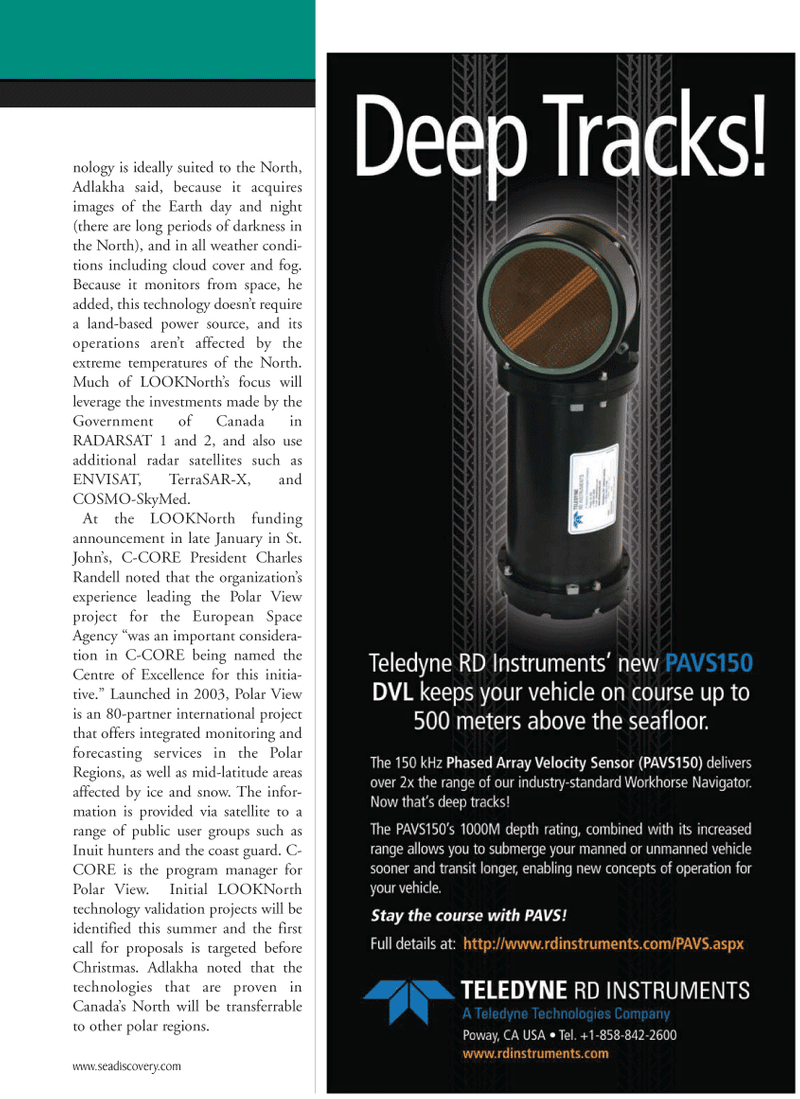
Page 17: of Marine Technology Magazine (March 2011)
Subsea Vehicles: AUV, ROV, UUV Annual
Read this page in Pdf, Flash or Html5 edition of March 2011 Marine Technology Magazine
www.seadiscovery.com nology is ideally suited to the North,
Adlakha said, because it acquires images of the Earth day and night (there are long periods of darkness in the North), and in all weather condi- tions including cloud cover and fog.
Because it monitors from space, he added, this technology doesn’t require a land-based power source, and its operations aren’t affected by the extreme temperatures of the North.
Much of LOOKNorth’s focus will leverage the investments made by the
Government of Canada in
RADARSAT 1 and 2, and also use additional radar satellites such as
ENVISAT, TerraSAR-X, and
COSMO-SkyMed.
At the LOOKNorth funding announcement in late January in St.
John’s, C-CORE President Charles
Randell noted that the organization’s experience leading the Polar View project for the European Space
Agency “was an important considera- tion in C-CORE being named the
Centre of Excellence for this initia- tive.” Launched in 2003, Polar View is an 80-partner international project that offers integrated monitoring and forecasting services in the Polar
Regions, as well as mid-latitude areas affected by ice and snow. The infor- mation is provided via satellite to a range of public user groups such as
Inuit hunters and the coast guard. C-
CORE is the program manager for
Polar View. Initial LOOKNorth technology validation projects will be identified this summer and the first call for proposals is targeted before
Christmas. Adlakha noted that the technologies that are proven in
Canada’s North will be transferrable to other polar regions.

 16
16

 18
18
